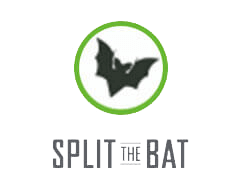RACCOON REMOVAL PROCESS
Assess and Remove
Raccoons are very intelligent and resourceful. This is why our 50 point inspection is designed to identify all current and potential raccoon entry points as well as any damage they may have caused. Our hands-on removal techniques are both humane and effective for adult and baby raccoons alike.
Clear and Clean
Raccoons are not very clean and their presence can lead to severe property damage. Skedaddle offers thorough cleaning and disinfecting of raccoon den sites to eliminate any health risks. We can also remove and replace any damaged attic insulation.
As urban areas continue to expand, wildlife like raccoons often find themselves displaced and seeking refuge in residential areas. These intelligent and adaptable creatures can quickly become a nuisance when they take residence in homes, attics, or other structures. At Skedaddle, we understand the challenges that come with sharing space with wildlife. Our mission is to provide safe and effective solutions for raccoon removal while ensuring the well-being of both our clients and the animals involved.
Our approach to raccoon removal in York Region is rooted in humane practices that respect wildlife and protect property. We recognize the importance of addressing wildlife issues with compassion and care, which is why we prioritize techniques that prevent harm and allow raccoons to return to their natural habitats. Our experienced team is equipped with the knowledge and tools necessary to assess the situation, implement exclusion methods, and provide homeowners with peace of mind. By choosing Skedaddle, you are supporting a service that values ethical interactions with wildlife and seeks to maintain harmony between human and animal communities. Through our efforts, we aim to foster a safer environment for both the residents of this city and its wildlife inhabitants.
Raccoon Behaviours and Challenges They Present For Home and Business Owners
Raccoons are nocturnal animals known for their curiosity and intelligence. They are proficient climbers and opportunistic feeders, often drawn to urban environments by the abundance of food and shelter. This adaptability can lead raccoons to enter homes and businesses in search of food, which may result in structural damage, such as torn shingles, insulation destruction, and compromised vent systems. Furthermore, raccoons are known carriers of diseases like rabies and parasites such as ticks and fleas, posing health risks to humans and pets. Their presence can also attract other wildlife, exacerbating the problem for property owners.
At Skedaddle, we understand the importance of keeping raccoons away from your home or business to prevent these challenges. Our approach to wildlife removal in York Region focuses on humane, effective prevention strategies that protect both people and animals. By understanding raccoon behaviour, we can help property owners implement measures that discourage their presence.
Securing potential entry points is crucial; we recommend sealing gaps in attics, roofs, and the foundations of buildings. Trash bins should be sturdy and equipped with tight-fitting lids to deter scavenging. Keeping outdoor areas clear of food sources, including pet food and birdseed, is also an effective deterrent. Removing fallen fruit and securing compost bins can further reduce the allure of your property.
Routine property inspections and maintenance play a key role in prevention. We advise regular checks for signs of intrusion or damage, as addressing issues promptly can prevent costly repairs down the line. By employing these proactive measures, we can help create a safer environment for our clients and their communities, ensuring peaceful coexistence with wildlife while maintaining property integrity. With Skedaddle’s expertise and commitment to ethical practices, property owners can rest assured that their wildlife concerns are handled with care and precision.
How To Get Rid Of Raccoons Humanely
When it comes to humane raccoon removal, Skedaddle’s process begins with a thorough inspection of the property. We first identify signs of raccoon activity and locate potential entry points where these animals may be gaining access to your home or business. This step is critical, as it allows us to understand the extent of the issue, and develop a strategy tailored to the specific circumstances we encounter. Our team uses this information to provide clients with a clear understanding of the situation and outline the planned approach for resolution.
Once we have an understanding of the site, our next task is to employ exclusion techniques designed to encourage raccoons to leave voluntarily. We focus on creating an environment that is unappealing to them while ensuring they can safely vacate the premises. During this phase, we may introduce one-way doors at entry points, which allow raccoons to exit but not re-enter. If there are any babies present, we make certain they are safely removed and reunited with their mother outside. This careful and precise method maintains family units and reduces stress on the animals, ultimately facilitating their return to natural habitats.
Following the successful departure of all raccoons, we proceed to secure potential entry points to prevent future intrusions. This involves repairing any damage caused by the raccoons and reinforcing vulnerable areas to withstand wildlife attempts at reentry. We use durable materials and proven techniques to bolster the structure’s defences, significantly reducing the likelihood of raccoon problems reoccurring. Our approach ensures that the space remains secure long after the initial removal, providing peace of mind for the property owner.
Finally, we provide guidance and recommendations on maintaining these defences over time. We may suggest habitat modifications around the property, like reducing food sources and clearing debris, that discourage raccoons from returning. Our ongoing support and client education help foster an environment where humans and wildlife can coexist peacefully. With Skedaddle’s commitment to humane and ethical practices, clients can trust that their raccoon concerns are resolved with precision and care.
Life in York Region
York Region is a unique and diverse area in Ontario made up of several cities, each offering its own charm and attractions. Visit Canada’s Wonderland, a premier amusement park in Vaughan, which is a great spot for family fun. The park is known for its thrilling rides, exciting water attractions, and entertaining shows. Another notable place in the area is Vaughan Mills Mall, one of Canada’s largest shopping centers. Here, visitors can explore a wide range of retail outlets, enjoy various dining options, and even visit attractions like the LEGOLAND Discovery Centre.
In Markham, you can experience the Markham Fair, an annual fall event that celebrates agricultural heritage. At the fair, visitors can enjoy livestock shows, a midway, live performances, and try out tasty local food. This event provides an opportunity to connect with the community and learn more about the area’s farming roots. Heading towards Richmond Hill, Lake Wilcox Park offers a peaceful setting for outdoor activities. With a scenic beach, walkways, and a splash pad, the park is ideal for picnicking, fishing, and kayaking.
Living in this region means having access to various cultural, recreational, and shopping opportunities without venturing far from home. Residents experience a blend of urban amenities and natural beauty, making it a desirable location for families and individuals alike. At Skedaddle, we are proud to serve this community, supporting their quality of life through ethical wildlife management practices. By understanding the needs of residents across the different cities within the region, we help ensure the peaceful cohabitation of humans and wildlife.
Contact Skedaddle For Humane Wildlife Control in York Region Today
York Region is a vibrant area full of cultural attractions, natural beauty, and thriving communities. As residents navigate the mixture of urban conveniences and nature, they may occasionally encounter challenges with local wildlife. Skedaddle is dedicated to providing ethical, effective solutions for managing these situations, ensuring humane and respectful treatment of the animals. Our seasoned team is committed to safeguarding both property and wildlife by employing innovative techniques that encourage animals to depart naturally. Through thorough inspection, exclusion methods, and follow-up support, we aim to maintain the harmony between humans and wildlife within the region.
For those facing wildlife issues in York Region, we invite you to contact Skedaddle for assistance. Our experienced professionals are ready to assess your property’s needs and offer tailored strategies to resolve any wildlife concerns. We pride ourselves on delivering humane and dependable services that align with our commitment to preserving the integrity of natural habitats. Don’t leave wildlife management to chance—reach out to Skedaddle today, and together, we can uphold a safe and balanced environment for everyone in the community.
Raccoon Facts
FACT:
Raccoons are incredibly resourceful creatures known for their dexterous front paws. These mammals can open jars, latch gates, and function fully without opposable thumbs thanks to their five-fingered paws, which help them interact with their environment in impressive ways.
FACT:
Found predominantly in North America, raccoons adapt well to urban environments. They thrive in cities and suburbs by scavenging for food in trash cans, gardens, and other human-associated areas, showcasing their adaptability and ingenious problem-solving skills that allow them to survive.
FACT:
These nocturnal animals are easily recognizable by their distinctive black “mask” of fur and bushy ringed tails. The “mask” helps reduce glare and may improve night vision, making these creatures adept at nighttime adventures to seek food and resources.
FACT:
Raccoons communicate using over 200 distinct sounds, including growls, hisses, and whistles. This varied vocal repertoire is essential for their social interactions, notably between mothers and their young, enabling them to convey emotions or alert others to potential threats.
FACT:
Despite their craftiness, raccoons are short-lived in the wild, averaging only two to three years due to various natural hazards. In captivity, however, where they face fewer threats, raccoons can live up to 20 years, highlighting the impact of the environment on their lifespan.
CHECK OUT OUR LATEST BLOGS
York Wildlife Control: Why You Should Never Trap Raccoons
York Wildlife Removal: Why Do Raccoons Like Attics?
4 Things Bringing Raccoons to Your York Property











